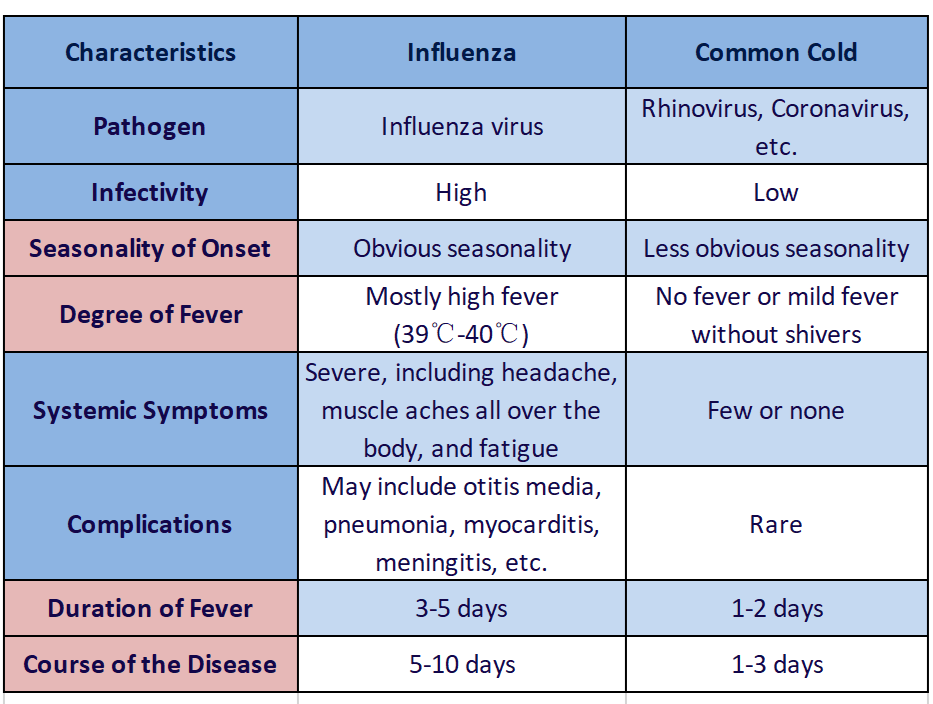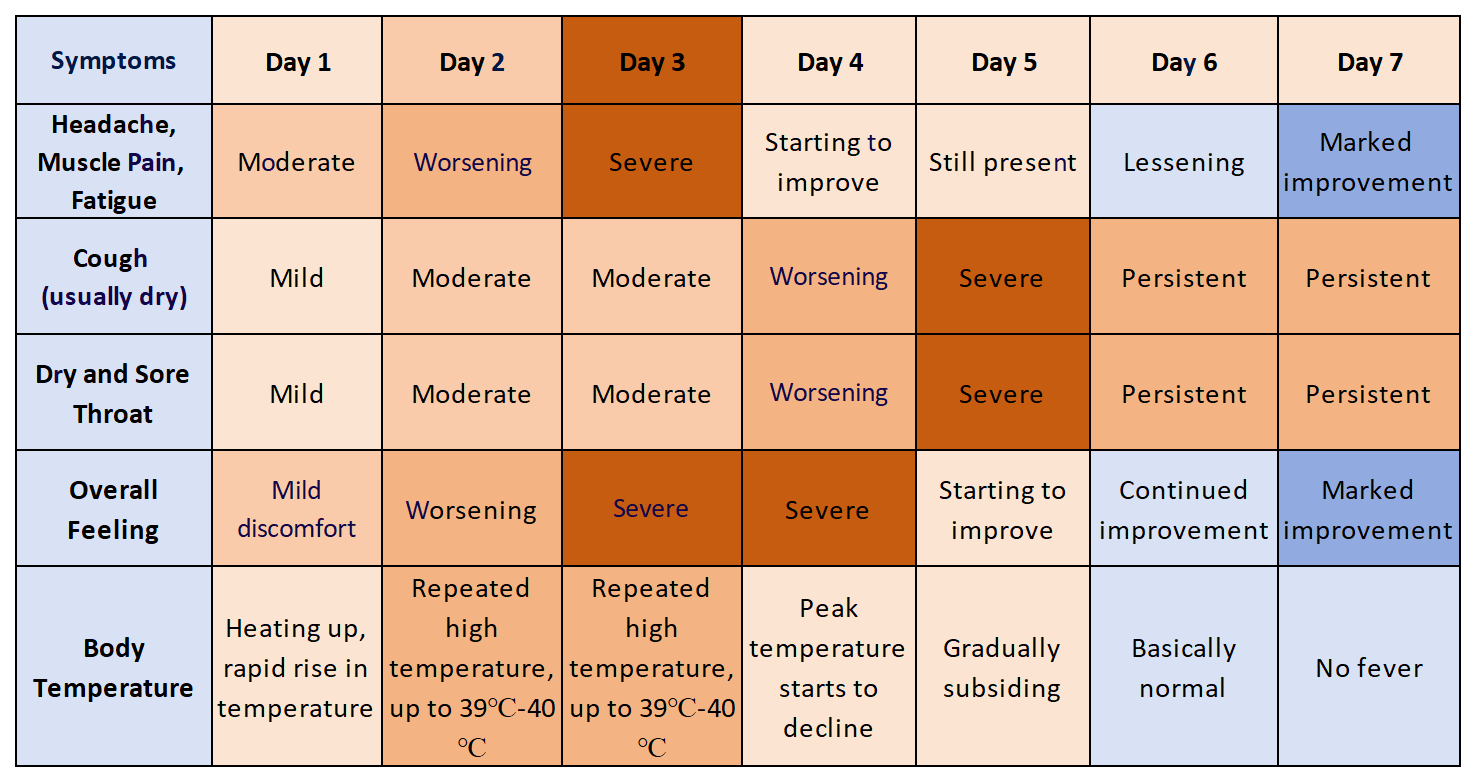Recently, there has been a high incidence of influenza. According to the latest data from the Chinese Center for Disease Control and Prevention, the positive rate of H1N1 flu (a subtype of influenza A) continues to rise. So, what are the differences between influenza A and the common cold, and what precautions should be taken when using medications?
Differences between influenza and common cold
Mild influenza exhibits similar symptoms to the common cold, but with more severe fever and systemic symptoms. In comparison, the common cold rarely causes systemic discomfort and mainly manifests as upper respiratory symptoms, such as runny nose, sneezing, and mild to moderate fever, while influenza A symptoms are more numerous and severe.

Typical symptoms of influenza A over 7 days
Influenza A is a type of influenza virus that causes acute respiratory infectious diseases. It is highly contagious and primarily manifests as high fever, with body temperature reaching 39 °C or even higher. Generally, the prevalence of influenza A tends to decline in March and April. During the onset of influenza A, the following are the main symptoms.

1. Apart from the above symptoms, many individuals also experience decreased appetite, fatigue, runny nose and nasal congestion, diarrhea, discomfort behind the sternum, facial flushing, conjunctival hyperemia, etc.
2. The course of illness for patients without complications is self-limiting, with fever gradually subsiding and systemic symptoms improving after 3 to 5 days of onset. However, the cough and full recovery of physical strength may take a week or longer.
3. Children typically experience higher fevers than adults. Infected newborns may not display the above symptoms but may show sleepiness, refusal to feed, apnea, etc., which requires vigilance.
4. Some patients may exhibit mild or no symptoms at all, with specific symptoms varying among individuals.
Additionally, according to Guangdong Traditional Chinese Medicine Hospital, children infected with the influenza virus, apart from fever and muscle soreness, may also experience cough, runny nose, sore throat, etc. They may also present with gastrointestinal symptoms such as nausea, vomiting, and diarrhea, which can easily be confused with intestinal virus infections (such as rotavirus and norovirus).
Precautions for medication use
Currently, there are medications specifically targeting influenza viruses, including neuraminidase inhibitors such as oseltamivir, zanamivir, and peramivir, as well as antiviral drugs such as abidol, baloxavir marboxil, and favipiravir.
When using baloxavir marboxil, note that it should be taken within 48 hours of onset and only once during the entire course. Its use should be strictly limited to adults and children over 5 years old and weighing more than 20 kg. Baloxavir marboxil is used to treat symptoms caused by influenza A or B, but it is not recommended for pregnant and breastfeeding mothers.

(Photo: JD Pharmacy)
In any case, to combat influenza, we should cultivate habits in our daily life such as frequent handwashing, adequate ventilation, and properly wearing of masks. Medication should be used under the professional guidance of doctors, especially prescription drugs, which require cautious use.
Cover image | Xinhua
Editor | Liao Ying, Yu Lulu, Liu Lingzhi, Wang Yulin, James, Shen He, Zhang Ying
















